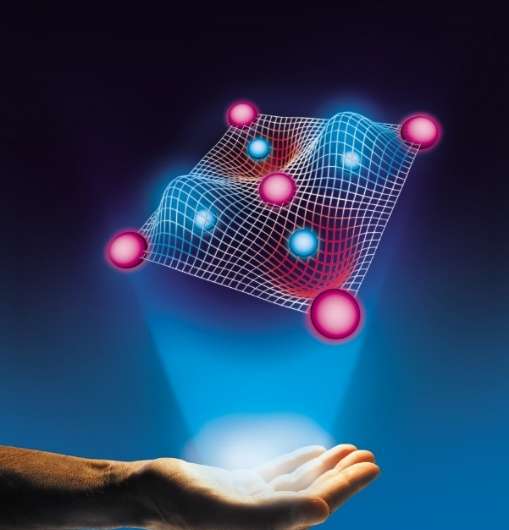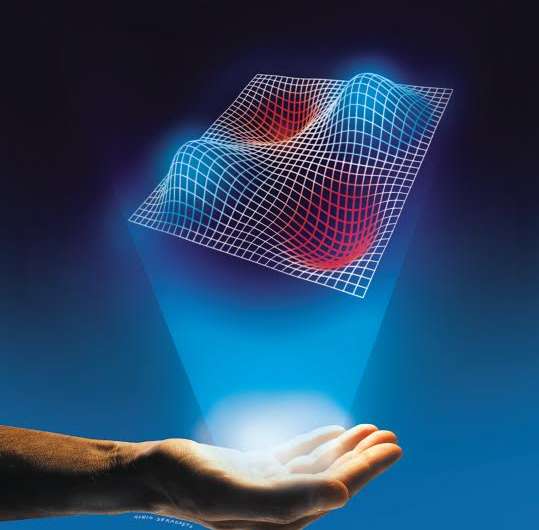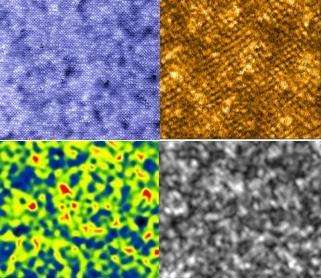Solving a cryptic puzzle with a little help from a hologram

A recent discovery published in Nature Physics provides an innovative technique for calculating the shapes of electrons. This finding will help scientists gain a better and faster understanding of the properties of complex materials. Dr. Emanuele Dalla Torre, from Bar-Ilan University, together with Dr. Yang He and Prof. Eugene Demler, from Harvard University, used holographic logic to compile an algorithm for visualizing the shape of an electron in a superconducting material. This successful collaboration clarified the puzzling results of a series of experiments performed in the past 15 years, resolving a mysterious scientific enigma.
Using math to explain nature
Dr. Dalla Torre - a faculty member in the Department of Physics at Bar-Ilan University in Israel - says that according to quantum mechanics electrons can possess wave-like properties. "The wave shape, however, is not always apparent, and tends to vary depending on the conditions of the material that hosts the electron," says Dalla Torre.
"The invention in the early 1980's of the STM - a remarkably high-resolution microscope—provided the ability, for the first time, to view individual atoms in materials. Nevertheless until now, scientists had viewed the shape of an electron only in isolated atoms—in a vacuum—but not within a complex material containing a vast array of atoms, where the outline of each electron is indistinguishable," Dalla Torre explains.
"We developed a mathematical algorithm which helped us analyse high-precision STM measurements of cuprates - copper-oxygen compounds, known to maintain the best superconductive properties. By identifying recurring correlations between previously unnoticed experimental data points, we were able to reconstruct the shape of the electrons in these wondrous materials", he says.

Who's afraid of theoretical physics?
"The shape that we found (as exhibited in the accompanying photo) contains positive (blue) and negative (red) regions. The electrons are suspended within an ordered structure of atoms: The blue circles indicate oxygen atoms, while the pink circles indicate copper atoms. For the first time ever, we isolated and confirmed a unique shape of an electron within a complex material", explains Dalla Torre, adding "Interestingly, this shape coincided precisely with predictions made in 1988 by theoretical physicists Zhang and Rice from ETH—the University for Science and Technology in Zurich."
Furthermore, by revealing previously unknown information, the discovery by Dalla Torre and his colleagues enabled them also to provide a coherent explanation for several enigmatic experiments, pioneered in 2002 by Prof. Seamus Davis, from Cornell University, and his student Prof. Jennifer Hoffman, from Harvard University, who, using an STM, revealed recurring patterns of atomic brightness in cuprates.
Over the years, numerous researchers offered interpretations for these findings and for other related ambiguous observations, but, until now, there was no satisfactory explanation for the mysteriously-recurring signals. Dalla Torre and his colleagues suspected it had to do with the shape of the electrons, and, once they mapped these shapes in cuprates, they were able to offer a simple explanation for the observation.
Randomly searching for new materials - like baking a cake without a recipe

"Superconductors are materials, which, at room temperature, barely conduct electricity. However, when cooled below a certain temperature - the critical temperature - they morph into superheroes and conduct electric currents without any resistance, and without heating up or melting. These materials, are, therefore, highly sought after for their potential use in a variety of next-generation technologies," explains Dalla Torre.
"The highest critical temperature of superconductors discovered until now is that of cuprates, which require cooling to as low as -135°C to become superconductive. The costs involved in cooling down to these temperatures are prohibitively high, which explains the ongoing search for the Holy Grail - the highest possible critical temperature which provides economic viability," Dalla Torre says. "In the absence of an effective methodology on their quest for new superconducting materials, labs worldwide resort to testing elements randomly, in the hope to discover the perfect candidate," he says. "It's like baking a cake with no recipe: You hope it comes out fluffy, but have no idea as to which ingredients may affect stiffness".
Light exercise with a hologram
Did you know that a hologram is not an actual image? It is an encoded pattern, based on a special characteristic of light. We are looking at a 2D image, which our eyes convert into 3D. Dalla Torre and his colleagues applied the logic of a hologram in order to attain information about a 3D object from measurements of a 2D surface. By extracting all the information encoded in a 2D STM measurement of cuprate, they visualized the shape of an electron.
Paving the way to future discoveries
Some consider electrons to be the "soul" of a material—determining its color, its conductivity, and its entire chemical activity. Dalla Torre expects that this innovative technique for decoding shapes of electrons will enable the design of smarter materials suitable for ever-changing future technologies. "By gaining a better understanding of the behavior of materials, scientists may be on the path to finding the next superconductor," he says.
More information: Emanuele G. Dalla Torre et al, Holographic maps of quasiparticle interference, Nature Physics (2016). DOI: 10.1038/nphys3829
Journal information: Nature Physics
Provided by Bar-Ilan University



















